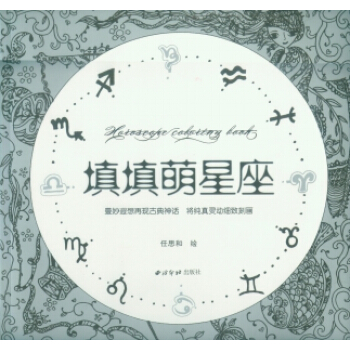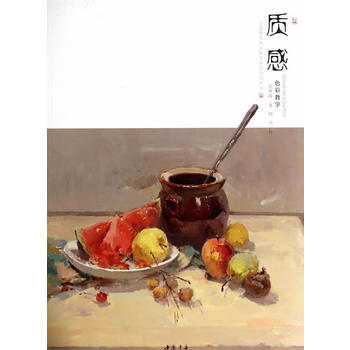具体描述
| 图书基本信息 |
| 图书名称 | 超简单!大师教你画花花 | 作者 | 【美】李J.艾姆斯著 王硕 李若愚 |
| 定价 | 39.80元 | 出版社 | 江苏凤凰文艺出版社 |
| ISBN | 9787559417930 | 出版日期 | 2018-06-01 |
| 字数 | | 页码 | |
| 版次 | 1 | 装帧 | 平装-胶订 |
| 内容简介 |
本书介绍了花朵的画法。你不需要从*个插图开始学习,可以从任何一个你感兴趣的插图开始。当你根据喜好决定开始的插图后,可以分步骤地学习绘画方法。 请轻巧和小心翼翼地勾画出步骤一,不管怎样,这是*步,也是*开始的一步,请*小心和*认真地勾画;第二步,请在*步的基础上继续勾画,需要同样的小心;第三步,请在*和第二步上继续勾画,接着之后的每一个步骤,直到*后一步。 在勾画每一步时,都要注意每两根线条之间的空隙和线条本身。在每一步后,可以用橡皮擦淡之前的线条。当你完成时,可以使用笔刷或钢笔加深*终画作的线条,当墨水干燥后,用橡皮擦掉铅笔线条,不会影响墨水线条。 这里有几条建议:在开始的几步中,即使当所有都感觉非常的正确,也建议你把画作放在镜子前观察。有时,镜子会显示出画作扭曲到了一侧,你可能之前都没有意识到。开始时,可能画一个鸡蛋,或者球形、香肠,或者就是想自如使用铅笔都非常的困难。不要失去信心,练习得越多,就会控制得越好。 |
| 作者简介 |
| 李·J.艾姆斯的职业生涯始于沃尔特·迪士尼工作室,曾任教于曼哈顿视觉艺术学院及纽约长岛道林大学。艾姆斯是一个工作狂,他拥有自己的广告公司,先后为多家杂志及150余本图画书和研究生教材提供插图。 |
| 编辑推荐 |
| 玫瑰、雏菊、郁金香、睡莲、鸢尾花……“超简单”带给你的无限乐趣! 在这本书中,有些花你在其他地方甚至从未见过,它更像一个笔尖上的世界园艺博览馆。比如玫瑰、雏菊、郁金香、睡莲、鸢尾花,当然也有诸如百合、水仙,甚至还有一品红、剑兰、山茱萸、山月桂…… 书中花朵造型规范,用笔准确、简练,高度概括原本复杂的花朵造型。绘画步骤由浅入深,简单易学,即使是绘画零基础,也可以将其作为一本自学入门书籍使用,并能迅速摆脱畏难情绪。让我们跟着大师一起享受简单画画的乐趣吧! |
绽放笔尖下的生命:探索花卉的艺术魅力 本书是一部关于花卉绘画的入门指南,旨在帮助读者掌握绘制各种美丽花卉的基本技巧。从常见的玫瑰、郁金香到更具挑战性的百合、牡丹,我们将循序渐进地引导您认识花卉的结构、形态和色彩,并通过详实的步骤解析,让您轻松拿起画笔,捕捉花朵的动态与神韵。 第一章:花卉绘画的基石——认识你的画布与工具 在正式开始创作之前,充分了解手中的工具和画布至关重要。本章将为您一一介绍绘画中常用的纸张类型,如水彩纸、素描纸、彩铅纸等,并分析它们各自的特性,帮助您根据绘画媒介选择最合适的载体。同时,我们将深入探讨各种绘画工具的运用,包括铅笔(不同硬度)、橡皮、炭笔、马克笔、彩铅、水彩颜料、丙烯颜料等。您将学习如何根据花卉的质感和风格选择合适的工具,例如,用细腻的彩铅捕捉花瓣的丝绒质感,用通透的水彩表现花瓣的晶莹剔透,或者用饱满的丙烯颜料展现花朵的立体感。 此外,本章还将重点讲解色彩理论的基础知识,包括三原色、三间色、互补色、冷暖色等概念,以及如何运用色彩来表现花卉的生命力、情感和氛围。您将学会调配出准确的花朵颜色,并通过色彩的对比与和谐来增强画面的表现力。 第二章:花卉的骨骼与肌理——从简到繁的结构解析 任何一朵美丽的花朵,都拥有其独特的骨骼结构。本章将从最基础的几何形状入手,教您如何将复杂的花朵简化为简单的圆形、椭圆形、三角形等基本图形,从而勾勒出花朵的整体轮廓。随后,我们将深入研究不同花卉的内部结构,包括花瓣的层叠方式、花蕊的形态、花茎的走向以及叶片的分布。 以玫瑰为例,您将学习如何从中心的花蕊开始,一层层向外绘制卷曲的花瓣,掌握不同角度下玫瑰花瓣的透视变化。对于郁金香,我们将着重讲解其杯状花朵的封闭式结构和向上生长的姿态。对于更具层次感的花卉,如百合,您将学习如何描绘其向外舒展的花瓣和向内聚拢的花蕊。 除了外部形态,花朵的肌理也是构成其生命力的重要部分。本章还将引导您观察和描绘花瓣的褶皱、边缘的细微卷曲、以及叶片表面的脉络。通过对这些细节的精准捕捉,您的花卉作品将更具真实感和艺术感染力。 第三章:生命的光影——光线在花卉绘画中的运用 光线是赋予物体生命和立体感的关键。在本章中,您将学习如何观察和表现光线在花卉上的照射效果。我们将深入探讨光源的方向、强度以及由此产生的阴影。您将学会如何区分明暗交界线、反光和投影,并运用这些技巧来塑造花朵的体积感和空间感。 通过对光影的精准把握,您可以让花瓣显得更加饱满,花朵的层次更加分明。例如,在描绘向日葵时,您可以通过明暗的对比来突出花盘的蓬勃生命力;在绘制水仙花时,您将学会用微妙的光影变化来表现其光滑的花瓣和透明的花蕊。 此外,本章还将介绍如何根据不同的光线条件来调整色彩的冷暖和饱和度,例如,在阳光直射下,花朵的颜色会显得更加鲜艳和温暖;而在阴影下,颜色则会趋于柔和和冷调。 第四章:色彩的交响——捕捉花卉的万紫千红 色彩是花卉绘画的灵魂。本章将带领您进入一个五彩斑斓的世界,学习如何运用色彩来表现花卉的丰富性和情感。您将学习各种色彩的混合技巧,例如,如何调配出逼真的花瓣颜色,如何通过色彩的叠加来表现花瓣的半透明感,以及如何通过色彩的渐变来展现花朵的层次和深度。 我们将分析不同花卉的典型色彩,并探讨色彩在不同情绪和氛围下的运用。例如,热烈的红色可以表现爱情与激情,淡雅的粉色则能传达温柔与浪漫,而清新的绿色则象征着生命与希望。 本章还将教授您如何运用色彩的对比和协调来增强画面的视觉冲击力。您将学会使用互补色来突出花朵的某个部分,或者使用邻近色来营造和谐统一的氛围。通过对色彩的深入理解和灵活运用,您的花卉作品将更具感染力和艺术张力。 第五章:风格的探索——从写实到写意,描绘你的独特视角 绘画的魅力在于其多样性。本章将引导您探索不同的花卉绘画风格,从而找到最适合自己的表现方式。我们将从最基础的写实风格开始,通过细致入微的观察和描绘,追求作品的真实感和准确性。您将学习如何准确地捕捉花卉的每一个细节,从花瓣的纹理到叶片的脉络,力求达到逼真的效果。 随后,我们将逐步引入写意风格,鼓励您打破传统束缚,用更自由、更具表现力的方式来描绘花卉。您将学习如何运用流畅的线条和写意的笔触来传达花朵的神韵和意境,以及如何通过色彩的块面和墨色的变化来营造抽象的美感。 本章还将介绍一些著名的花卉画家及其作品,通过欣赏大师的创作,激发您的创作灵感,并帮助您理解不同风格的精髓。最终,您将能够根据自己的个性和喜好,形成独特的绘画风格,用属于自己的视角来描绘心中的花卉世界。 第六章:从局部到整体——系统性地创作一幅花卉作品 在掌握了基础的绘画技巧和理论之后,本章将指导您如何系统性地创作一幅完整 Thus, the book is dedicated to enhancing your understanding and skill in rendering diverse floral subjects. This comprehensive guide aims to equip you with the necessary tools and knowledge to confidently approach any floral painting challenge, from the simplest bloom to the most intricate arrangement. Chapter 1: The Foundation of Floral Artistry – Understanding Your Canvas and Tools Before embarking on your artistic journey, a thorough understanding of your materials is paramount. This chapter will introduce you to the various types of paper commonly used in painting, such as watercolor paper, drawing paper, and colored pencil paper. We will analyze their distinct characteristics, enabling you to select the most appropriate substrate for your chosen medium. Furthermore, we will delve into the practical applications of a wide range of artistic tools, including pencils of varying hardness, erasers, charcoal, markers, colored pencils, watercolor paints, and acrylic paints. You will learn to choose the ideal tools based on the texture and stylistic intent of your floral subjects. For instance, delicate colored pencils can capture the velvety texture of petals, translucent watercolors can render the crystalline sheen of blossoms, and rich acrylics can convey the volumetric presence of flowers. This chapter will also place significant emphasis on the fundamental principles of color theory. Concepts such as primary, secondary, and tertiary colors, complementary colors, and warm and cool palettes will be explored. You will learn how to effectively utilize color to express the vitality, emotions, and atmosphere associated with flowers. The ability to mix accurate floral hues and enhance the expressive power of your artwork through color contrast and harmony will be a key takeaway. Chapter 2: The Anatomy and Texture of Flowers – From Simplicity to Complexity Every beautiful flower possesses a unique underlying structure. This chapter begins by guiding you to simplify complex floral forms into basic geometric shapes like circles, ovals, and triangles, thereby laying the groundwork for sketching the overall silhouette of a flower. Subsequently, we will examine the internal structures of various flowers in detail, including the layering of petals, the morphology of stamens and pistils, the growth patterns of stems, and the arrangement of leaves. Using the rose as an example, you will learn to construct the flower from its central core outwards, layering spiraling petals and mastering the perspective shifts of rose petals viewed from different angles. For tulips, our focus will be on their distinctive cup-like form and their upward growth habit. For flowers with more intricate arrangements, such as lilies, you will learn to depict their outward-reaching petals and inwardly clustered reproductive organs. Beyond external morphology, the texture of a flower is a vital component contributing to its lifelike quality. This chapter will encourage you to observe and render the subtle undulations of petals, the delicate curls of their edges, and the venation patterns on their leaves. By accurately capturing these fine details, your floral artwork will gain enhanced realism and artistic appeal. Chapter 3: The Play of Light and Shadow – Mastering Illumination in Floral Painting Light is the essential element that imbues objects with life and dimensionality. In this chapter, you will acquire the skills to observe and depict the effects of light as it falls upon flowers. We will explore the direction and intensity of light sources and the resulting shadows. You will learn to distinguish between the terminator, reflected light, and cast shadows, and to apply these techniques to model the volume and spatial presence of your floral subjects. Through a precise understanding of light and shadow, you can make petals appear more full and enhance the distinct layers of a flower. For instance, when painting sunflowers, you can emphasize their vigorous vitality through the contrast of light and dark; when rendering narcissus, you will learn to use subtle shifts in light and shadow to portray their smooth petals and translucent reproductive parts. This chapter will also cover how to adjust the warmth and saturation of colors based on different lighting conditions. For example, under direct sunlight, flower colors tend to be brighter and warmer, while in shadow, they become softer and cooler. Chapter 4: A Symphony of Colors – Capturing the Kaleidoscope of Flora Color is the soul of floral painting. This chapter will lead you into a world of vibrant hues, teaching you how to use color to express the richness and emotion of flowers. You will master various color mixing techniques, such as how to achieve realistic petal colors, how to render the translucency of petals through layered colors, and how to create depth and dimension through color gradients. We will analyze the typical color palettes of different flowers and explore the application of color in conveying various emotions and atmospheres. For instance, passionate red can express love and ardor, delicate pink can evoke gentleness and romance, and fresh green symbolizes life and hope. This chapter will also teach you how to enhance the visual impact of your artwork through color contrast and harmony. You will learn to use complementary colors to highlight specific parts of a flower or to employ analogous colors to create a harmonious and unified atmosphere. Through a deep understanding and flexible application of color, your floral works will become more compelling and artistically resonant. Chapter 5: Exploring Styles – From Realism to Expressive Interpretation The beauty of art lies in its diversity. This chapter will guide you in exploring different styles of floral painting, helping you discover your most suitable mode of expression. We will begin with the fundamental realistic style, striving for authenticity and accuracy through meticulous observation and rendering. You will learn to precisely capture every detail of a flower, from the texture of its petals to the veins of its leaves, aiming for a lifelike effect. Subsequently, we will gradually introduce expressive styles, encouraging you to break free from traditional constraints and to depict flowers in a more fluid and evocative manner. You will learn to convey the spirit and essence of flowers through flowing lines and expressive brushstrokes, and to create abstract beauty through planes of color and variations in ink washes. This chapter will also present the works of renowned floral artists, inspiring your creativity by appreciating their masterpieces and helping you understand the essence of different styles. Ultimately, you will be able to develop your own unique artistic style, based on your personality and preferences, and to paint the floral world as you envision it. Chapter 6: From Details to the Whole – Systematically Creating a Floral Artwork Having acquired the foundational painting techniques and theories, this chapter will guide you through the systematic process of creating a complete floral artwork. We will break down the entire creative process into manageable steps, starting from preliminary sketches and color studies to the final execution. You will learn how to plan your composition, consider the overall balance and focal points of your piece, and make informed decisions about the arrangement of elements. We will discuss various approaches to building up your painting, whether it's layering transparent washes in watercolor, applying opaque strokes in acrylics, or subtly blending colors with colored pencils. Throughout this chapter, emphasis will be placed on developing your critical eye to evaluate your progress and make necessary adjustments. By following these structured steps, you will gain the confidence and methodology to tackle any floral painting project from conception to completion, ensuring a satisfying and visually compelling final piece.






















